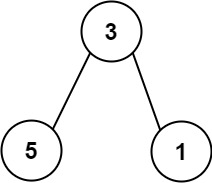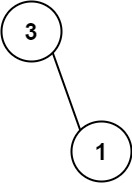666. Path Sum IV
Description
If the depth of a tree is smaller than 5, then this tree can be represented by an array of three-digit integers. For each integer in this array:
- The hundreds digit represents the depth
dof this node where1 <= d <= 4. - The tens digit represents the position
pof this node in the level it belongs to where1 <= p <= 8. The position is the same as that in a full binary tree. - The units digit represents the value
vof this node where0 <= v <= 9.
Given an array of ascending three-digit integers nums representing a binary tree with a depth smaller than 5, return the sum of all paths from the root towards the leaves.
It is guaranteed that the given array represents a valid connected binary tree.
Example 1:

1 | Input: nums = [113,215,221] |
Example 2:

1 | Input: nums = [113,221] |
Constraints:
1 <= nums.length <= 15110 <= nums[i] <= 489numsrepresents a valid binary tree with depth less than5.
Hints/Notes
- N/A
Solution
Language: C++
1 | class Solution { |